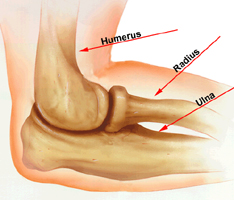WRYNECK : Causes, Symptoms and Treatment
Congenital disorders are defined as those abnormalities of development that are present at the time of birth. It is quite a common problem exceeded in frequency only by those of CNS and CVS systems.
Congenital disorders can be placed in three groups.
- Those easily noticed by the mother, e.g. clubfoot.
- Those not readily noticed, e.g. congenital dislocation of hip (CDH).
- Those clinically undetected but diagnosed radiologically, e.g. spondylolisthesis.
Congenital disorders are more prevalent in diabetic mothers, multiple pregnancies, older mothers, etc. Male and female have equal predilection.
Causes
The exact cause is not known. Most congenital disorders begin early in the life of the embryo when cell division is most active. Although a few congenital disorders may be due to uterine malposition, most are believed to be due to genetic defects, environmental influences or a combination of both.
Genetic Factors
Defects in the chromosomes of sperm and ovum result in specific disorders ,which follows Mendel’s law.
Embryonic Trauma
Congenital disorders can also result from injury to the developing embryo at the time of differentiation of embryonic tissue into specific tissues by extraneous factors.
CONGENITAL TORTICOLLIS (WRYNECK)
Congenital torticollis is a condition where the sternocleidomastoid muscle of the neck undergoes contractures pulling it to the same side and turning the face to the opposite side. The exact cause of this condition is unknown; but hypothetically, it may be due to fibromatosis within the sternomastoid muscle.
Etiology
- Middle part of the sternomastoid is supplied by an end artery, which is a branch of the superior thyroid artery that is blocked due to trauma, etc.
- Birth trauma-Breech delivery, improper application of forceps, etc. may cause injury to the sternomastoid muscle.
The above two reasons can result in sternocleidomastoid muscle ischemia, necrosis and fibrosis later on.
Clinical Features
Deformity is the only complaint initially. Later, facial changes and macular problems in the retina may develop.
Radiograph
Plain X-ray of the neck AP and lateral views are essential to detect any congenital abnormality of the cervical vertebra that could lead to this condition.
Treatment
Principles
- During infancy, conservative treatment consists of stretching of the sternomastoid by manipulation and physiotherapy. Excision is unjustified in infancy.
- Surgery is delayed until fibroma is well-formed. The muscle may be released al one or both ends and the muscle may be excised as a whole.
- If the muscle is still contracted at the age of 1 year, it should be released.
- If wryneck is persistent for I year, it will not resolve spontaneously and needs to be interfered operatively.
- Exercise program is successful:
- When restriction of motion is less than 30 degree.
- When there is no facial asymmetry.
- Non-operative treatment after 1 year is rarely successful.
- Any permanent torticollis becomes worse during growth. Head is inclined towards the affected side, face is turned towards the opposite side, ipsilateral shoulder is elevated and the fronto-occipital diameter is increased.
Surgical Method
The most commonly employed surgical method is subcutaneous tenotomy of the clavicular attachment of the sternomastoid muscle. This procedure is inaccurate and dangerous as there could be an injury to the external jugular vein and phrenic nerve. Hence, release from its attachment on the mastoid process is also tried. Open tenotomy if done before the child is 1 year old, tethering of the scar takes place. If the surgery is done between 1 and 4 years of age, tilt of the head and facial asymmetry are corrected less satisfactorily. If done after 5 years of age, the secondary deformities are less corrected.
For older children or after failed operation, bipolar release of the muscle from both sides, Ferkel’s modified bipolar release or Z-plast of the muscle is tried.




